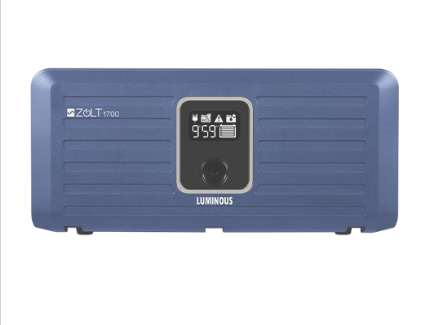With an increasing demand for electricity, power cuts have become more common nowadays. It can get uncomfortable even if we sit without the fan spinning overhead for a few minutes. Home inverters were introduced to save you from time-consuming power cuts and to meet all your energy requirements!
Currently, an inverter is an important appliance in almost every home. But what is an inverter, and how is it used at home? Let us explore these aspects.
How do Inverters Work?
Inverters serve as backup power sources during sudden electrical outages. It turns on the household appliances when the main power is unavailable.
These inverters operate by transforming Direct Current (DC) into Alternating Current (AC). DC originates from batteries or solar panels. AC is used for the primary electricity supply as DC is not suitable for long-distance transmission. Home appliances rely on AC power from the primary grid, characterised by its bi-directional flow compared to the uni-directional flow of DC.
Environmental Impact of Inverters
The power inverter needed ranges from essential to advanced functions. It is influenced by the household inverters operating with simplicity, requiring minimal tasks, while industrial counterparts serve complex machinery.
A household inverter handles lighter loads and sees more frequent use, prioritising lower consumption. Conversely, an industrial inverter manages heavier loads but operates less frequently due to the nature of heavy machinery.
Transforming Home Power Systems
The inverters you should choose depend on the type of power output you require. Following this, we have divided inverters into two categories:
- Pure sine wave power inverter for home: The AC (Alternating Current) voltage is a type of electrical current that continuously varies, swinging back and forth between positive and negative values.
It has an advantage over long-distance power transmission. Power is carefully regulated from the grid to get a pure sine wave. Also, it radiates the least amount of radio power with excellent quality. Almost all electrical and electronic appliances work well in a sine wave inverter.
- Square Wave Power Inverter: It is the simplest form of output wave available in the cheapest form of inverters. A square wave power inverter can run simple appliances without problems, and its voltage can be easily generated using a simple oscillator.
It is the cheapest type of inverter that converts DC signal to AC signal through phase-shifting, but it produces an output that is not purely AC.
Advantages of Inverter Technology
- Affordable And No Running Cost: An inverter is a portable device which is affordable and has no running cost. When you buy an inverter, you have to not worry about extra charges like fuel, and need to charge that inverter.
- Noiseless: When we use any device and if it makes noise, it becomes disturbing for all. A home inverter is noiseless. You don’t have to worry about noise and can be stress-free.
- No Fumes: An inverter is a safe device for your other electrical gadgets. You don’t need any trouble thinking about its power supply because it converts your DC to AC, which protects your devices from high or low voltage.
- No Oil Spillage: An inverter works by current, which makes it safer. Unlike a generator, you do not have to worry about its fuel.
Switching to Inverters: A Path to a More Efficient Home Life
Today, a home inverter is important due to the rising frequency of power outages. These devices are crucial as they enable homes to sustain basic needs by powering essential lights and fans during such disruptions. These power devices offer efficiency, reliability, and flexibility, ensuring a consistent power supply during outages. Depending on individual needs, opting for more power inverters from brands like Luminous can accommodate higher power demands.
